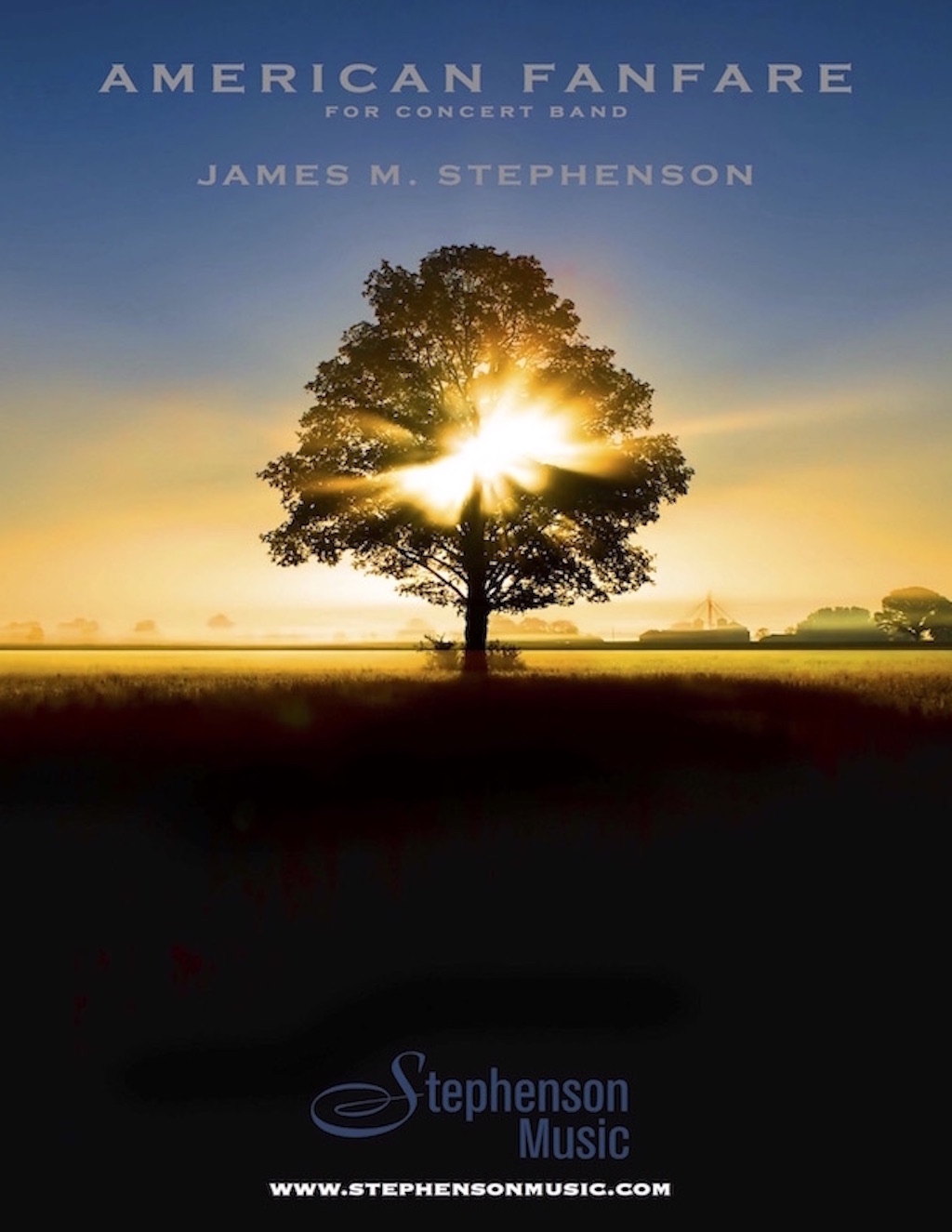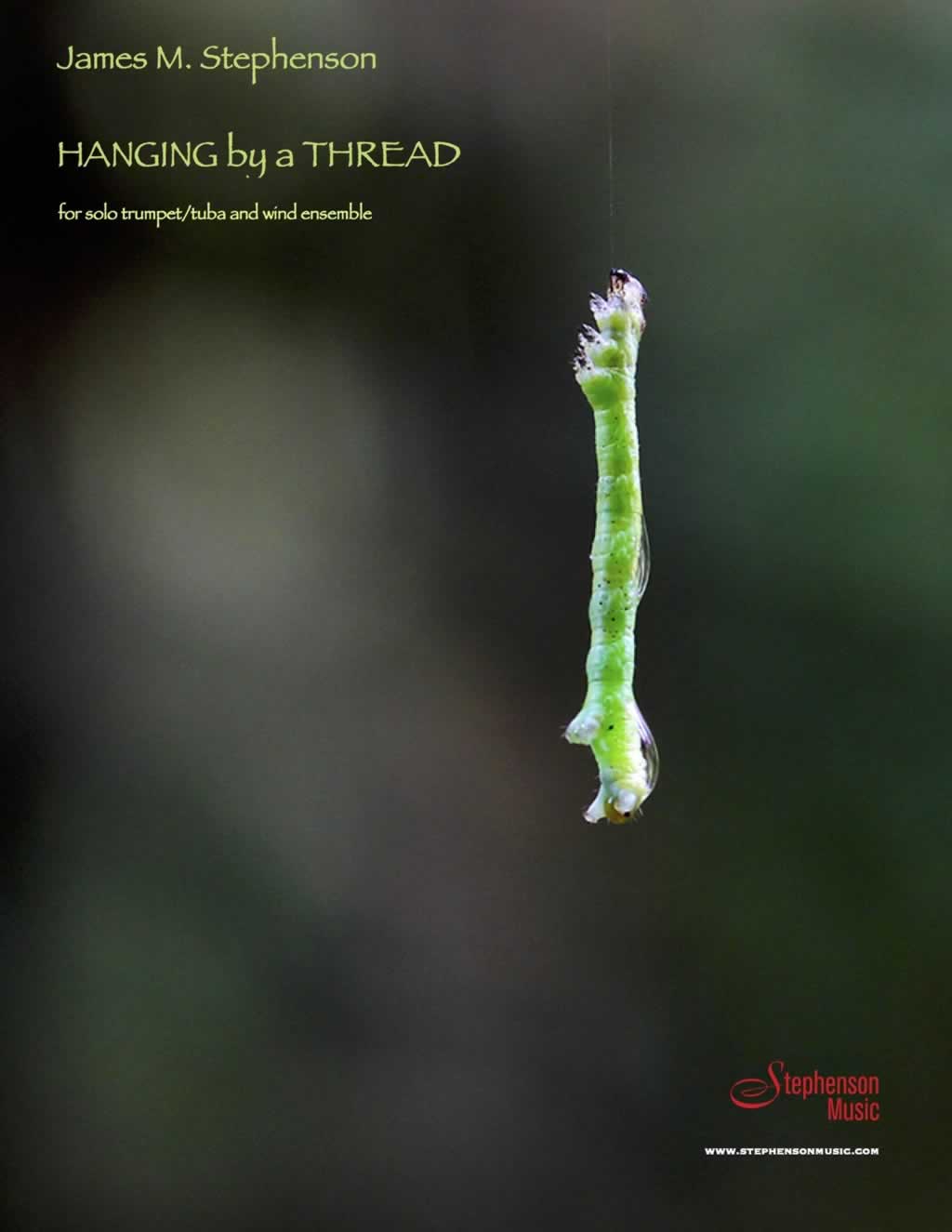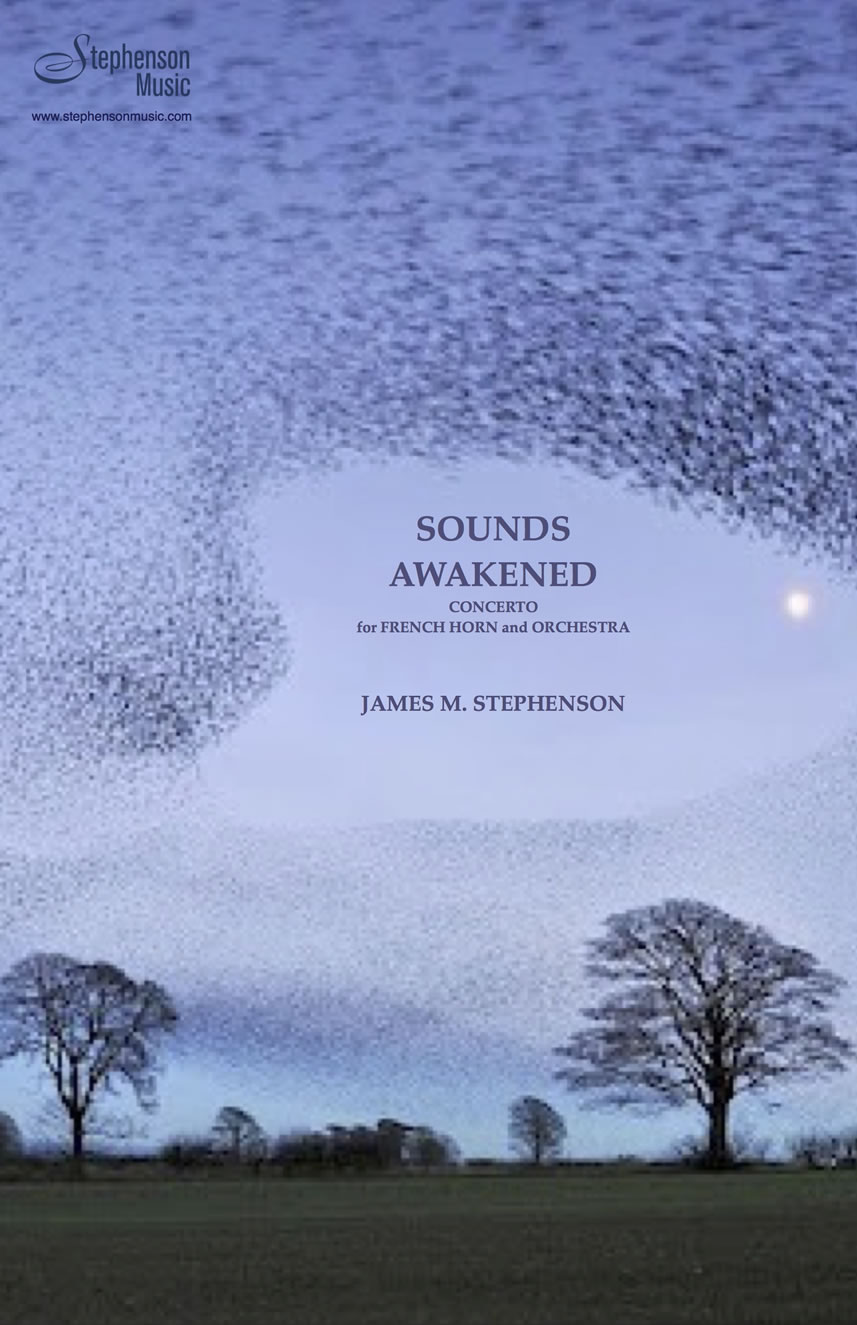The Devil’s Tale
$60.00 – $300.00
(sequel to Stravinsky’s L’histoire du Soldat”)
A “Palindrama”
For violin, clarinet, bassoon, trumpet, trombone, bass, percussion, and narrator. View Score
VIDEO of composer conducting.
Listen here (Ravinia performance), or scroll down to view world premiere.
Description
Devil’s Tale (2013) Narrative
for Violin, Contrabass, Clarinet (A/Bb), Bassoon, Trumpet, Trombone, Percussion (1 player) Solo Narrator. Options available for dancers, actors – staging.
Duration: Music only: approx. 34 minutes, with Narration: approx. 45 minutes
A most sincere thank you goes to:
Western Illinois University & Mike Fansler, Director of Bands, conductor
lead commissioning consortium member (premiere: May 17, 2013)
John Bruce Yeh and the Chicago Pro Musica
lead commissioner for fully staged production
Consortium commissioners:
Doc D’errico
Debbie Katz Knowles
Lynn University – Marc Reese, Assistant Dean and Brass Department Head
Middle Tennessee State University – Reed Thomas, Professor of conducting
Towson State University – Dana Rothlisberger, Director of Bands
The United States Army Band “Pershing’s Own” Contemporary Music Ensemble
University of Arkansas – Richard Rulli
Premiered on May 17, 2013 by the Western Illinois University Faculty Chamber Ensemble:
Mike Fansler, conductor
Matt Bean, narrator
Julieta Mihai, violin
Eric Ginsberg, clarinet
Doug Huff, bassoon
Bruce Briney, trumpet
John Mindeman, trombone
Matt Hughes, contrabass
Rick Kurasz, percussion
Devilʼs Tale – ʻhidden elementsʼ in the story by Jim Stephenson
My version of this familiar story of Joseph, the devil, et al, is called “The Devilʼs Tale”. Its inspiration comes from basically telling Ramuzʼ story backwards, in effect, as one giant palindrome.
This all began with imagining starting my story where Stravinskyʼs leaves off, with the somewhat ambiguous drum solo. (it is sometimes played with a crescendo, sometimes with a diminuendo). It was this ambiguity which led me to realize that it could almost be the beginning to a piece as well.
I have had many dreams myself, where I am convinced that I hear the stroke of a drum, and am startled and awakened – only to realize, of course, that it was just a dream. That was the impetus for the starting-off point for my story – that the solo drum is all part of one giant dream. In fact, to take it a step further, that the whole Soldierʼs Tale (it is a tale, after all) was just one giant dream of a present day Joseph, who is in actuality situated in Las Vegas, as a pit musician for a show. Once I knew that I would start with the percussion solo, and that it was a giant palindrome, I knew I needed to end with walking “down a hot and dusty road”. The task at hand was then to just fill in all of the blanks…
A few things I knew:
1) I didnʼt want this to be about the violin. That has been done, masterfully, by Stravinsky, and frankly, if this is to be done as a sequel, and in the same concert as the Stravinsky, I think the violinist needs a break. Therefore, all musicians get featured at one point or another, and generally speaking, the low instruments represent the devil, and the upper, Joseph/Hannah, or “goodness”.
2) I wanted it to be more relevant, more obviously universal, and so the general theme is more about love and love-lost. Ramuz story never gripped me entirely, so I wanted to create something more easily grasped.
3) I wanted to create more of a part for the female character – in my case, Hannah, Joeʼs girlfriend. This leaves more opportunity for dance, which I think could be quite compelling.
4) I wasnʼt sure whether to make mine just prose, or in a rhyming scheme. My final decision was to rhyme it, but leave the rhythm rather loose, leaving it open for interpretation by the narrator or actors. I think this is somewhat similar to my interpretation of Ramuz, or at least the translation thereof that I know.
Once I came up with the palindrome idea, I searched for some existing palindromes. I immediately found that many of them include the word devil, which suited my purposes.
Beyond that, I found those that were inspirational, and used the ones that suited my story, and could both fit the narrative and the music simultaneously.
The story is then filled with palindromic words and phrases. There are also many symbolic references to the devil – by using terms that have come to be known over the years.
FAQs
- Does this work need a conductor?
It has been performed with conductor and without (Ravinia). It has also been used as a pairing work for graduate students also preparing L’histoire. - Is the work similarly challenging as the Stravinsky?
My piece has more to do for everyone. I wanted to give everyone equal roles, and I give the violinist a bit of a break. (This is on purpose in case he/she is also preparing the Stravinsky). The challenges in any “licks” are certainly rewarding for the effort. - Does this work need a narrator?
If doing the entire piece, then yes. It’s been done with 1 narrator many times, and also 4 narrators in another situation. Just like the Stravinsky, if someone were to perform a non-narrated suite, I could suggest movements. - Are there actors involved?
The work is written so that it could be acted for sure. But it is not necessary. It is also scored with the idea of having dancers as well. I am hoping to see this in the not too distant future! - Is there a PDF version?
Just as with my other works, the answer is yes. In this case, however, I might not recommend it. It is a lot of music, and you would be doing a LOT of printing.
[hr]
CD Reviews
The Devil’s Tale—A Sequel to Stravinsky’s “L’Histoire du Soldat.” Matt Bean, narrator; Western Illinois University Faculty Chamber Players (Julieta Mihai, violin; Matt Hughes, contrabass; Eric Ginsberg, clarinet; Douglas Huff, bassoon; Bruce Briney, trumpet; John Mindeman, trombone; Rick Kurasz, percussion) conducted by Mike Fansler. Ravello. $16.99.
Fanfare Magazine
It seems to be a truism that the sequel of something—whether a book, movie, piece of music, or what have you—is never as good as the original. If that’s your opinion, think again! This piece comes very close to reaching the standard set by Stravinsky in his masterful L’Histoire du soldat, of which this is a sequel. The Devil’s Tale is a most remarkable work, and is scored for precisely the same forces as its predecessor.
Unlike most of the contemporary music I review for Fanfare, this CD does not constitute the first time I have heard this music, albeit my first exposure to it came only about a month prior to my writing this review. At that time, I heard the composer conduct an ensemble here at Indiana University, a wonderfully taut performance that demonstrated to me that James Stephenson is almost as gifted in his conducting abilities as he is in those as a composer. The Devil’s Tale not only picks up where L’Histoire leaves off, but it is essentially a retelling in reverse of the story by Charles-Ferdinand Ramuz, creating one giant palindrome when paired with the earlier work. To reinforce this fact, Stephenson has given all of the movements palindromic titles (e.g., “Live, O Devil, revel ever! Live! Do evil!” or “No, it is opposition”). The fact that many palindromes incorporate the word devil certainly makes them expedient for the project.
Going even further than that, the composer has taken the drum solo that closes L’Histoire and begins his own work with one that is very similar. This drum passage seemed to indicate the awakening from a dream to Stephenson, so he decided to make his entire work a setting of a dream of Joseph, the protagonist in the original Ramuz tale. Joseph, now Joe, is settled in Las Vegas as a part time musician in a show. His part-time employment apparently gives Stephenson an excuse not to feature the violin as prominently as it was in Stravinsky’s work; rather, he gives all seven instruments a fairly equal part such that each of the players has numerous chances to shine. He also attempted to make his story more universal than that of Ramuz, so Stephenson has centered his tale on love and love lost.
After the opening drum solo (complete with crescendo to mirror Stravinsky’s closing diminuendo), the narrator announces the dream, and we are presented with a lively introduction that immediately resurrects the rhythmic vitality of Stravinsky’s style (even while Stephenson retains his own compositional voice). Following, one hears movements of repose and reflection, angst-ridden outbursts, and dances that would be almost impossible to dance to, all in keeping with the text at the moment. In some pieces, one hears a pronounced jazz influence, such as in the three dances, “Cigar,” “Toss it in a can,” and “It is so tragic” (which mirror the three—“Tango,” “Valse,” and “Ragtime”—in Stravinsky’s version). These are not jazz pieces, mind you, but they have resided in the speakeasy long enough to absorb some of the odors.I’m particularly impressed at how Stephenson handles the seven instruments (counting the percussion as one) he writes for. Each is given lines perfectly idiomatic to it, and their timbres are combined in most ingenious ways. One of my favorite instances of such combination comes in a march featuring a double bass solo against an accompaniment of trombone, bassoon, clarinet and snare drum. As in L’Histoire, Stephenson also reprises several of the numbers (varied somewhat) in order to reinforce elements of the plot.
One of the most humorous, in-your-face pieces comes in “Name no one man,” a Dixieland-infused bit of raucous brashness. Following immediately is “No, it is opposition,” a gentle number, a stylistic galaxy away from the preceding. The final movement is a reprise of “Now I won,” a jocular conflation of Stephenson’s music with a few not-so-subtle quotes from the work that inspired his; the piece concludes with a seeming exact reiteration of the opening phrase of L’Histoire, completing the palindrome as it were. I was only sorry that somewhere in the work, Stephenson didn’t include my favorite palindrome, “I, man, am regal, a German am I.” Or, maybe it’s “May a moody baby doom a yam?” He did, at least, miss one devil-related one: “Satan, oscillate my metallic sonatas!” In any case, as an enthusiast of the form, I am delighted to encounter another kindred spirit.
The performers heard herein are all superb, but I dispense especially high kudos to the narrator, Matt Bean, who convincingly portrays all three characters (Joe, the Devil, and Hannah, Joe’s girl). Conductor Mike Fansler also runs a tight ship, and keeps everything moving at a good pace. This is very simply, then, a CD not to be overlooked by anyone with an interest in Stravinsky, or brilliantly written music that enhances an interesting story. Or—just buy it for the palindromes!
David DeBoor Canfield
Gapplegate Classical-Modern Music Review
“Something today rather unusual, a kind of sequel to Stravinsky’s chamber-and-narrative classic “L’Histoire du Soldat,” namely James M. Stephenson and his The Devil’s Tale (Ravello 7906). It essentially gives us Stravinsky’s “Soldat” in reverse, as far as plot goes. There is no fiddle, instead the main character is a musician in a Las Vegas show band, his girlfriend a Vegas dancer, the devil a blackjack dealer. We get a plot where the devil loses, in a kind of symmetrical reversal of the Stravinsky.
I’ve said my peace about works with extensive non-sung narratives. I generally dislike the approach. Here the dialog tells the story effectively enough. Narrator Matt Bean is called upon to play all three characters. He is no Laurence Olivier doing “Hamlet,” but let me just bracket all that. It is fundamental to a reverse “Soldat” and so it is there. But it is not the strength of the work.
What captures my fancy about the piece is the music. Stephenson manages to convey the period essence, the early Jazz-ish strains of the Stravinsky, the neo-classic elegance and brilliance of the original piece, and make a modern-day analogue that fascinates and enthralls. The seven-member Western Illinois University Faculty Chamber Players under Mike Fansler do an excellent job realizing the score.
Stephenson not only understands the essence of the Stravinsky, he recaptures it and creates a vivid rejoiner. If the music reminds a bit of period Weill as well, so much the better.
The rhymed narrative-play has of course an essential role in the totality. I have followed along in my listens and must say it is quite adequate, though again perhaps a Laurence Olivier would put it all together in a more convincing way. But the music is quite nice and well performed. So we get a good idea of Stephenson’s gestalt. And the music triumphs!
If you love “L’Histoire du Soldat” this will give you pleasure. Even without knowing the original there is much to please. Something different!”
INFODAD.COM
“Ridiculously ambitious and remarkably successful, James Stephenson’s The Devil’s Tale is a thoroughly fascinating continuation of, updating of, commentary upon and expansion of Stravinsky’s L’Histoire du Soldat, using the same instrumental complement that Stravinsky employed and channeling Stravinsky’s wit, sense of the fabulous (in the sense of telling a fable), and dramatic sensibility.
The upshot of the story – whose music weaves wonderfully into the tale-telling, just as it does in Stravinsky’s piece – is that Joe and Hannah escape the Devil’s clutches and, indeed, Las Vegas itself. But at the end, they are walking with their bags along a hot and dusty road – exactly the place where L’Histoire du Soldat begins. So what have they really accomplished, if Hannah’s suggestion that they “begin again” simply leads, indeed, to beginning again? Stephenson is extremely clever throughout The Devil’s Tale in both music and narrative, and although the work is self-limited by the need to know L’Histoire du Soldat, this Ravello recording shows it to be attractive enough on its own so that perhaps some listeners might be willing to try it first and then go back to Stravinsky to find out where the story began (if a circle can ever be said to begin).”
INFODAD.COM: Family-Focused Reviews
Audiophile Audition
Jim Stephenson is a very talented Chicago area composer who has written for nearly every instrumental combination including wind ensemble and strings and chamber music and always with attractive and interesting results.
The premise here is both a simple one as well as a wildly creative one. I am fairly sure that one else has thought to pay homage to Stravinsky’s master chamber work, A Soldier’s Tale, by writing what is basically a sequel before.
Stephenson’s version tells the tale backwards, turning the entire program into a kind of mirrored dance with the devil. In this version, though, the protagonist Joseph triumphs in the end over the devil’s constant attempts to bring him down with his tempting but unbelievable offers, by playing a trick of his own. Stephenson’s score does occasionally borrow little themes from L’Histoire du Soldat. However, it is uniquely and quite cleverly his own, filled with many of Stephenson’s “calling card” harmonies, riffs and punchy rhythms that owe as much to jazz as they might – in this instance – owe to Stravinsky. Stephenson begins his tale with the very snare drum action that closes the Stravinsky and then he concludes the piece with the opening line from The Soldier’s Tale, bringing this palindrome-like parable to a catchy conclusion.
The score is engaging and holds the attention quite well throughout its nearly one hour duration. Special compliments have to go to narrator Matt Bean who brings the story to life with wonderful inflection as he captures the very ‘up to date’ lingo and many truly funny lines that punctuate the score.
If there is but one thing that I thought of outside of the music is that the work; narration and all, is maybe just a tad too long. Fifty-five or so minutes is about as long as the coy atmosphere can be carried, I felt. All the more reason, though, to compliment Matt Bean for his part which does take up about fifteen minutes of the total. This is a minor quibble, however. This is a very clever concept carried out really well by James Stephenson’s skilled and creative pacing of bits of melody, snappy rhythmic momentum and harmonies that are delightfully “Stravinsky meets jazz” which met Stephenson.
The faculty players from Western Illinois University in Macomb are quite good and a pleasant discovery. This is not an ensemble we get to hear nearly enough. Kudos to Ravello for bringing this entertaining gem to our attention. I know that Jim Stephenson has a lot a very interesting projects on his plate right now, including a tribute work to the late, brilliant principal trumpeter with the Chicago Symphony, Bud Herseth; Stephenson being a trumpet player himself. I am anxious to hear more!
[hr]
Purchase Recording
Using Igor Stravinsky’s final percussion solo from L’histoire du soldat (The Soldier’s Tale) as inspiration, James M. Stephenson’s theatrical narrative, THE DEVIL’S TALE, picks up right where Stravinsky leaves off. But on this Ravello Records release, the protagonist, Joseph, wakes up at the final drum-stroke and realizes that the Stravinsky was all a dream. He is relieved to still be in Las Vegas with Hannah, his showgirl girlfriend, at his side, where the story begins to unfold. The dramatic and astute plot about Joseph, a pit musician, and Hannah centers around their attempt to escape the city by tricking Sam, a devilish blackjack dealer and Hannah’s manager. Teeming with deceit, temptation, and revenge, the narrative is a confrontation between the natures of good and evil, in which the Devil is played at his own game of guile. Infused throughout with clever palindromes, the story comes full circle by ending just where the Stravinsky begins: on a “hot and dusty road.” Stephenson’s work is captivatingly performed by the Western Illinois University Faculty Chamber Players, conducted by Mike Fansler.
Visit THE DEVIL’S TALE web application to access the digital booklet, videos, and more.
Additional information
| Duration | |
|---|---|
| Featured Instrument | Bassoon, Clarinet, Contrabass, Percussion, Trombone, Trumpet, Violin |
| Type of Purchase | |
| Type of Work | |
| Band Category | 5 |





